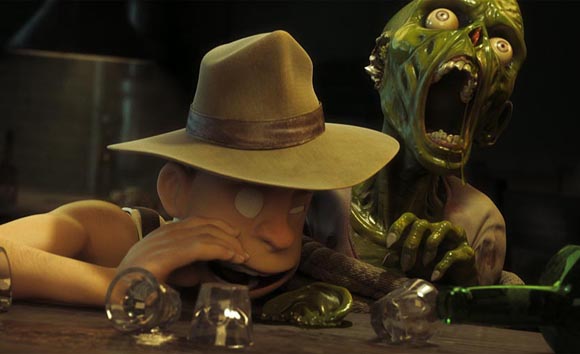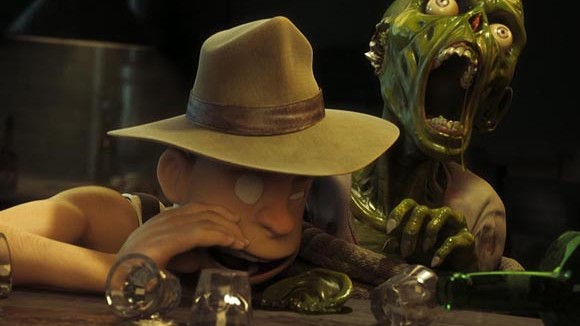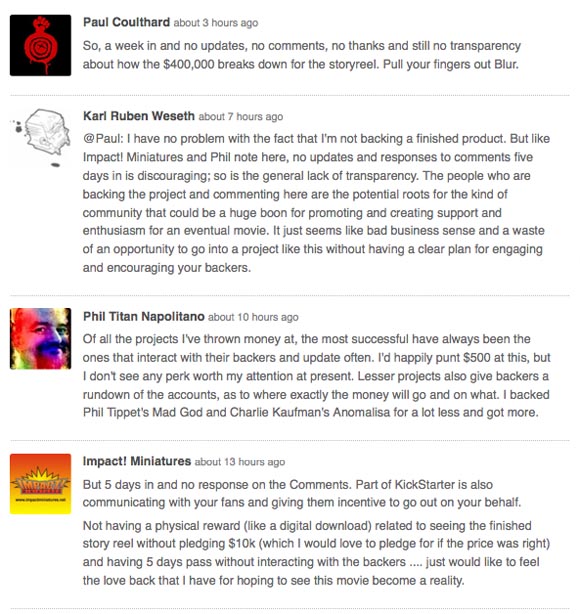

Why “The Goon” Is A Troubling Kickstarter Project [UPDATED]

Kickstarter launched with the promise of helping independent artists raise funding for projects that otherwise couldn’t easily be financed. As I wrote last month, the site’s animation category has more recently transformed into a place where established creators are raising six-figure dollar amounts from their fanbases. That’s not to say there aren’t plenty of independent projects on Kickstarter too, but those projects have been drowned out by the established creators who are grabbing much of the attention nowadays.
While Cartoon Brew has a longstanding policy to not promote active crowdfunding campaigns, the prominence of crowdfunding demands that we report on key campaigns that have news value to the community. The project discussed within has already received plenty of media attention, but it also has broader relevance to the animation crowdfunding discussion.
Last week, a Kickstarter was launched to fund an animated adaptation of Eric Powell’s Dark Horse-published comic The Goon. The project has a lot of high-profile names attached to it including live-action director David Fincher (Fight Club, Se7en), vfx/animation outfit Blur Studio, and actors Paul Giamatti and Clancy Brown.
The idea has been around for a while—a proof-of-concept trailer for The Goon was produced in 2010—but the project hasn’t moved beyond that stage. Now, Fincher, Blur, et al., are asking for the largest amount yet for a Kickstarter animated project—$400,000. What’s especially noteworthy—and troublesome—about their campaign is that not a single frame of animation will be produced for that amount of money.
Why?
Because they are asking for $400,000 to create a story reel for the feature film. Curiously, the story reel that will be produced won’t be made available to the backers of the campaign. While plenty of other rewards are being offered, The Goon represents a first for an animated project on Kickstarter—asking people to donate money to something they can’t see.
So what, you might ask? You’ll be able to see the finished animated feature. Well, maybe. If these guys require nearly half a million to create a story reel, that means they’re budgeting it as a traditional mid-sized studio feature, which will run in the range of $40-70 million (give or take ten million). There’s no guarantee the film will be made unless they can get that funding from a major studio, something that they haven’t been able to do thus far.
Should the film be made by a corporate film studio, that company just saved themselves half a million dollars on the backs of dedicated animation fans who believe they’re funding an indie project, when in reality they’re funding a mainstream Hollywood feature. There is nothing “indie” about the way Fincher and Blur are setting up the film, and they have a responsibility to be upfront about the reality of what they’re creating.
A number of backers have expressed their concerns on the campaign’s comments page:

The problem with The Goon Kickstarter boils down to this: They’re not producing a story reel that will be made available to the project’s backers. That means it’s an open-ended project, and if that’s the case, then it’s a clear violation of Kickstarter’s policies.
Further, while I’m sure Fincher and Blur Studios are well intentioned in their desire to make an animated feature, their approach of mixing their fans’ money with those of media corporations, the latter of whom will receive all the profit from a Goon feature, leads to an uncomfortable situation that is contrary to the entire spirit of Kickstarter. Artists should use the generosity of backers in crowdfunding campaigns to fulfill a creative vision, not to help corporations make money, as The Goon Kickstarter is currently set up to do.
[UPDATE]: Blur Studio’s Tim Miller just posted a comment on the Goon‘s comments page in which he said he wouldn’t share the story reel with the overwhelming majority of backers because, “[W]e believe having the whole film online would cause serious issues with any studio who wants to back the project.” This confirms my thoughts above that this project wouldn’t be possible without a major studio’s support. It also turns the Kickstarter campaign (in its current form) into an open-ended project with no complete project delivered to backers and no funding in place to take it further. This, as I mentioned above, is a violation of Kickstarter’s policies.
[UPDATE #2]: Read the response of Blur Studio’s Tim Miller to this commentary.
